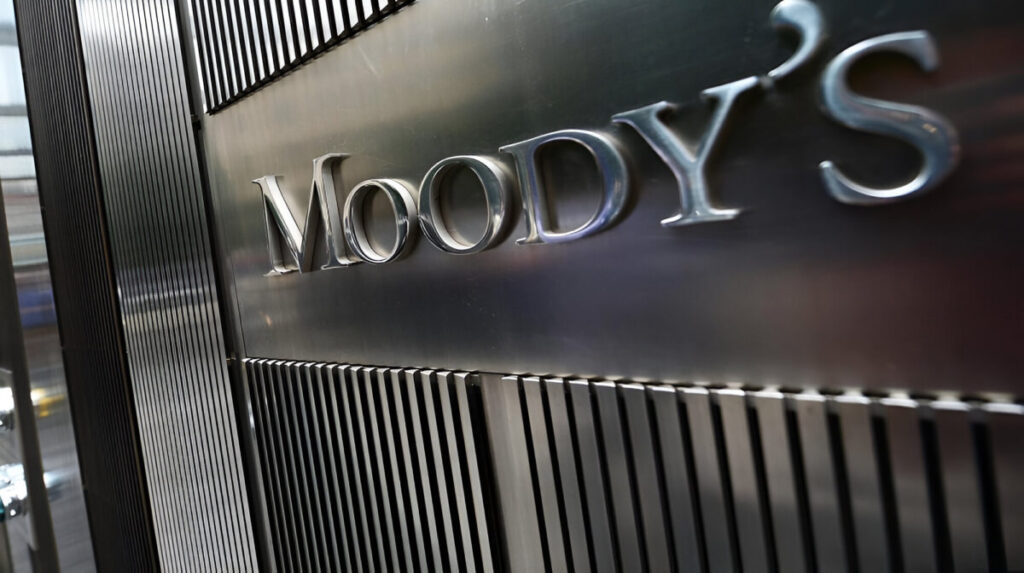Islamabad, Aug 30: Five Pakistani banksm Allied Bank Limited (ABL), Habib Bank Ltd. (HBL), MCB Bank Limited (MCB), National Bank of Pakistan (NBP), and United Bank Ltd. (UBL) had their long-term deposit ratings improved by Moody’s Ratings (Moody’s) to Caa2 from Caa3.
“We have also confirmed the BCA of NBP at caa3, and raised the Baseline Credit Assessments (BCAs) of ABL, HBL, MCB, and UBL to caa2 from caa3. The rating agency further stated, “The outlook on the long-term deposit ratings of all banks has been changed from stable to positive.”
Rating action comes after Moody’s decision to raise the issuer and senior unsecured debt ratings of the Pakistani government from Caa3 to Caa2. “The upgrade of Pakistan’s sovereign rating from Caa3 to Caa2 indicates the country’s strengthened creditworthiness, which is a result of improving macroeconomic conditions, moderately improved government liquidity, and improved external positions from extremely weak levels. These factors are the driving forces behind today’s rating action.” Due to their substantial holdings of sovereign debt instruments and the strong correlations that exist between their credit profile and the government’s credit profile, Pakistani banks stand to gain additional benefits from these developments. The government’s increased ability to offer assistance in times of need is another factor driving the upgrading of NBP, it continued.
According to Moody’s, Pakistan’s government rating remains good, which is consistent with the positive outlook for all banks’ long-term deposit ratings, indicates the Pakistani government’s possible greater ability to assist the banks in times of need. The optimistic prognosis also takes into account possible enhancements to the operating environment, which might raise Pakistan’s macro profile and raise BCAs.
If the banks continue to show strong financial performance and the operational environment gets stronger as indicated by a higher macro profile, the ratings may be raised. This is also the case if the sovereign rating is raised. Given the banks’ substantial holdings of national debt instruments, the outlook for Pakistani banks’ long-term deposit ratings could stabilize if the sovereign rating stabilizes. A decline in the financial measures of individual banks may also lead to a stabilization of their outlook, in particular on capital sufficiency, profitability, and asset quality.
“We have upgraded the long-term deposit ratings from Caa3 to Caa2, and we have confirmed NBP’s BCA and Adjusted BCA at caa3. The maintenance of NBP’s BCA at caa3 offsets the anticipated decline in its capital ratios with its strong funding and liquidity profile, as well as its sufficient ability to generate profits. The latter comes after the bank lost a supreme court appeal over pension disputes, which the management believes will cost PKR 98 billion, or about 25% of the equity owned by its shareholders.
Given NBP’s substantial role in the banking sector and its 75% government ownership through Pakistan Sovereign Wealth Fund (PSWF), we continue to factor in a very high chance of government support for the bank’s long-term deposit ratings, which now translates into a one-notch increase in sovereign support and raises the bank’s long-term deposit ratings to Caa2, in line with the sovereign rating, the statement continued.
The statement went on, “We have improved the bank’s long-term deposit ratings to Caa2 from Caa3, as well as the BCA and Adjusted BCA of HBL to caa2 from caa3. The good liquidity buffers, strong deposit-funded profile, and good earnings-generating capacity of HBL are reflected in the upgrade of its long-term deposit ratings to Caa2, which comes after the upgrade of its sovereign rating. However, it also highlights the elevated nonperforming loans and modest adjusted capital buffers when we risk-weight Pakistani government securities at 150%.
Previously, the sovereign rating limited the deposit ratings due to the bank’s significant exposure to government securities, which made up 45% of its total assets as of June 2024. “We have raised the long-term deposit ratings to Caa2 from Caa3, as well as UBL’s BCA and Adjusted BCA to CAA2 from CAA3. In response to the sovereign rating improvement, UBL’s long-term deposit ratings were raised to Caa2.
The bank’s solid deposit base, robust liquidity reserves, and decreasing profitability are all factors in this upgrade, but it also takes into account its modest adjusted capitalization and higher-than-average nonperforming loan percentage when we risk-weight Pakistani government securities at 150%. Because of the bank’s significant exposure to government securities, the sovereign rating historically placed restrictions on the deposit ratings, representing 75% of all assets as of June 2024,” continued Moody’s.
The rating agency went on to say, “We have upgraded the long-term deposit ratings to Caa2 from Caa3, as well as the BCA and Adjusted BCA of MCB to caa2 from caa3. The bank’s strong profitability, stable deposit base, and liquidity buffers are reflected in the upgrade of MCB’s long-term deposit ratings to Caa2, which comes after the upgrade of the sovereign rating. However, the bank’s high asset risks in a difficult environment are also reflected in the upgrade of the bank’s ratings. Meanwhile, adjusted capitalization remains weak when we risk-weight Pakistani government securities at 150%. Previously, the sovereign rating limited the deposit ratings due to the bank’s significant exposure to government securities, which made up 49% of its total assets as of March 2024.
The statement went on, “We have raised the long-term deposit ratings to Caa2 from Caa3, as well as the BCA and Adjusted BCA of ABL to caa2 from caa3. Following the increase of the sovereign rating, ABL’s long-term deposit ratings were raised to Caa2. The bank’s stable deposit-based funding, large liquid buffers, and comparatively low portfolio of problem loans far below the system average as well as its modest adjusted capital buffers in the face of difficult operating conditions are all captured by the upgrade. Previously, the sovereign rating limited the deposit ratings due to the bank’s significant exposure to government securities, which made up 48% of its total assets as of March 2024.
